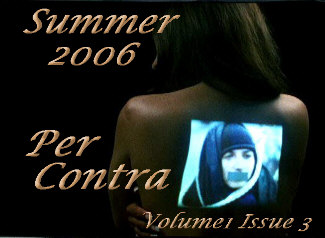
Visual Arts
Zhi Lin - Click Here
"The massacre in 1989 at Tiananmen Square in Beijing was a watershed event for me. As someone belonging to a generation that went through the Cultural Revolution, I understood the consequences of any political precedents in real life terms. The bloodshed made me believe that there is a role in society for art, and art should be used to prevent those kinds of events from happening in the future. In order to achieve that we have to change ourselves first; and we shall not allow any government to dehumanize its people, otherwise the unthinkable history will repeat itself. The project "Five Capital Executions in China," which I have been working on since 1992, is that kind of undertaking."
Rulan Geiger - Click Here
"Chinese citizens had no freedom to choose where to live and to work, same as the college graduates. We were assigned the jobs by the government depending on our family backgrounds and political behavior. I should graduate from the Central Academy of Fine Arts in 1967, but the Cultural Revolution started in 1966, the country was in chaos. The whole education systems were stopped. A few years later, my college moved to the countryside, a hard labor camp, guarded by military soldiers. From professors to students all worked on the field for 3 years. In 1973, the military assigned job for us, 6 years later than my graduation day. They assigned me to Inner Mongolia, because I was a counterrevolutionary. This was a punishment, a political exile. In long Chinese history, assignment of people to outside of the Great Wall was always an exile. I had to leave my husband and one year old son to go to Mongolia by myself."
Max Mason - Click Here
"I loved the outdoor work, the maps and all the gorgeous landscape photographs in the geology text book. By the time I realized I wasn't so keen on the science part of it I had completed all the course requirements for the degree, except the thesis, so I opted to stick with it, and get my degree. That same summer I took a figure painting work shop and realized I wanted to pursue a career in art."
Lascaux to Last Week: Art History's Survey Texts by Larry Silver - Click Here
"We are habituated to seek out easel paintings on whitewashed walls by known and named artists, primarily Europeans. How often do we visit the corners or basements, where “decorative arts” or exotic, often non-literate visual cultures get marginalized?"
Reinventing a New Classic: The New Janson by Charles Morscheck - Click Here